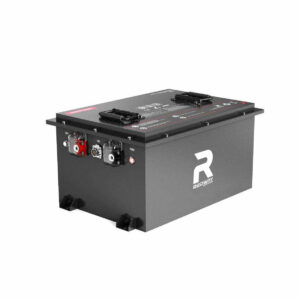What Are the Best RV Batteries for Off-Grid Water Systems?
RV water systems depend on batteries to power pumps, heaters, and filtration. These components require stable voltage and deep-cycle capability to handle intermittent use. Batteries must sustain consistent energy output without rapid depletion, especially in off-grid settings where shore power is unavailable. Lithium-ion and AGM batteries are top choices due to their deep discharge tolerance and efficiency.
Future of RV Battery Efficiency
How Do AGM and Lithium-Ion Batteries Compare for Off-Grid Use?
AGM batteries are affordable, maintenance-free, and handle moderate discharge cycles well. However, they’re heavier and have shorter lifespans (3–5 years). Lithium-ion batteries are lighter, last 8–10 years, and provide 80–100% usable capacity versus AGM’s 50%. Though pricier upfront, lithium’s longevity and efficiency make it superior for long-term off-grid water systems.

When evaluating long-term costs, lithium-ion batteries often prove more economical despite higher initial prices. For example, a 100Ah lithium battery provides 8,000–10,000 cycles at 80% depth of discharge (DoD), while a similarly priced AGM battery offers only 500–1,000 cycles at 50% DoD. Weight is another critical factor: lithium batteries weigh 50–60% less than AGM equivalents, reducing fuel costs and improving RV maneuverability. For users relying on solar charging, lithium’s faster absorption of solar energy (up to 1C charge rate) minimizes generator dependency. AGM remains viable for seasonal campers or those with limited budgets, but lithium dominates for full-time off-grid living.
| Feature | AGM | Lithium-Ion |
|---|---|---|
| Cost per Cycle | $0.25–$0.40 | $0.08–$0.12 |
| Weight (100Ah) | 60–70 lbs | 25–30 lbs |
| Solar Compatibility | Requires PWM | Works with MPPT |
Can Solar Panels Effectively Charge RV Water System Batteries?
Yes, solar panels pair well with lithium-ion and AGM batteries. Lithium’s high charge acceptance (up to 1C) allows faster solar charging, maximizing sunlight hours. AGM batteries require slower charging to avoid gas buildup. Use MPPT charge controllers for optimal efficiency. Solar reduces generator reliance, making it ideal for remote off-grid setups.
Solar panel sizing directly impacts charging efficiency. A 300W solar array can recharge a 200Ah lithium battery in 4–5 hours of peak sunlight, whereas AGM batteries need 8–10 hours due to lower charge acceptance rates. For winter camping, lithium’s wider temperature tolerance ensures consistent charging down to -4°F when paired with integrated heating pads. AGM systems may require auxiliary power sources in sub-freezing conditions. Key components for solar success include:
- MPPT controllers (20–30% more efficient than PWM)
- Battery monitors with state-of-charge displays
- Adjustable mounting brackets for optimal sun angle
FAQs
- Q: How long can an RV battery run a water pump?
- A: A 100Ah lithium battery can power a 12V water pump (5A draw) for ~16 hours at 80% discharge. AGM provides ~8 hours at 50% discharge.
- Q: Are gel batteries suitable for RV water systems?
- A: Gel batteries offer spill-proof design but have lower charge acceptance and higher costs. They’re less common than AGM or lithium for modern RVs.
- Q: Do lithium batteries require special inverters?
- A: Yes. Use pure sine wave inverters compatible with lithium’s voltage range (12.8V–14.6V). Avoid modified sine wave models to prevent efficiency loss.
“Lithium-ion batteries are revolutionizing off-grid RV setups. Their ability to handle deep discharges and rapid solar recharging makes them indispensable for water systems. While AGM remains a budget option, lithium’s 10-year lifespan and weight savings justify the investment for serious adventurers.” — Redway Power Solutions Lead Engineer
Selecting the best RV battery for off-grid water systems hinges on balancing capacity, cycle life, and compatibility with renewable energy. Lithium-ion batteries outperform AGM in efficiency and longevity, while AGM suits budget-conscious users. Pairing with solar and adhering to maintenance protocols ensures reliable water access in remote locations.
